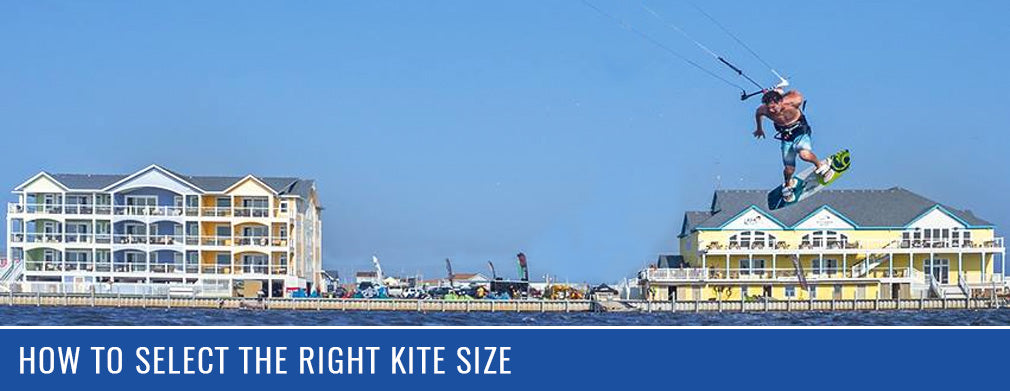How to Select the Right Kite Size

Sometimes we like to make things harder then they have to be and selecting your “perfect” kite size shouldn’t be one of them. Things to remember: you will need different kites to fly in different winds. The size of your kite depends on how much you weigh. Lastly, what type of rider are you? Unfortunately if you didn’t know already you will need to have different kite sizes for different wind speeds. In the great world we live in there is no “one size fits all” kite. With that being said most average sized riders (140-190lbs) would want to start with a 12m kite. This is the standard for most riders. This size will get you out on the water most windy days depending on where you live. Most people will ultimately need at least two kites, One for lower winds and one for higher winds.
To not confuse you too much here is a simple chart to explain wind speed for you
Large kite for lighter winds (14-18m) - 8-15mph.
Medium kite for medium winds (11-13m) - 15-20mph
Small kite for higher winds (5-9m) - 20-25 mph
It is also helpful to understand a few things about the sizing of kiteboarding kites. Kites are rated by their sail area, in square meters. This is the sail area, not the wingspan. Another thing to note is the different types of kites that exist. There are three basic types of kiteboarding kites available bow kites, "C" kites, and hybrids they each fly a little different. The first kites that became popular were "C" kites, they were the original depowerable inflatable kites and many people still enjoy the direct feel that these kites provided. Typically modern "C" kites are made for more advanced riders that are after the feel that only a "C" kite can deliver. Next came bow kites. This changed the kiting world significantly because bow kites have more complex bridles that allow the kite to be depowered a whole lot more than the original "C" kites. The tradeoff however was the loss of the direct feel of the "C" kites. Now by far the most popular models of kites are hybrids between the two styles giving as much of the direct feel as possible while retaining the great depowerability of bow kites. Hybrid kites dominate the market and if you have done any looking around at all you have probably been looking at a lot of hybrids. If you are trying to pick out your first kite you should be looking at bow kites and hybrid that are listed as freeride kites.
If your NEW to the sport
You should always start with a kite that might not pull you too hard, and a very large board. This is the easiest and safest combination to start riding because being underpowered* is far better then being ripped and overpowered the first time you put a kite up! For more board sizes check out Selecting the right Board Size. The type of kite you want to focus on are freeride hybrids. Like stated above these are the best all around kites for newbies. They are easy to relaunch and will sit deeper in the wind making them more stable so you have less chance for error while learning. Like we said before kites vary in size based on your weight and your area's wind range. So make sure you know what the average windy day is for your riding area before you jump for a kite that might not work for you.
Judge your kite sized based on the rider you are now and not the rider you want to be in the future. We see to many times people just want to skip the basics and jump right into Freestyle riding before they are at all ready to fly a ‘C” Kite. So, know where you are at in the progression and buy according to your skill level, weight, and the winds you typically fly in.
Want to get started early? Buy a trainer kite to help progress your kite skills. Learn more here.
Check out our Kites for deals on getting started.
